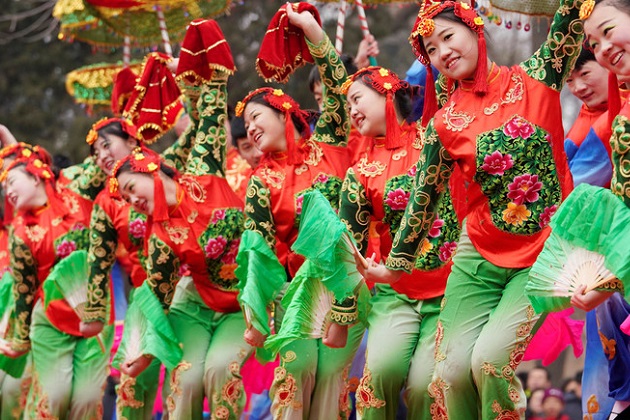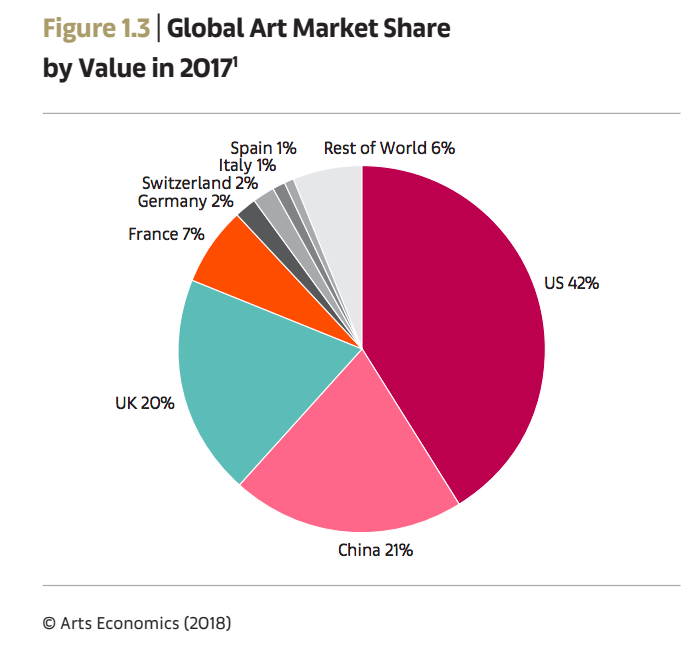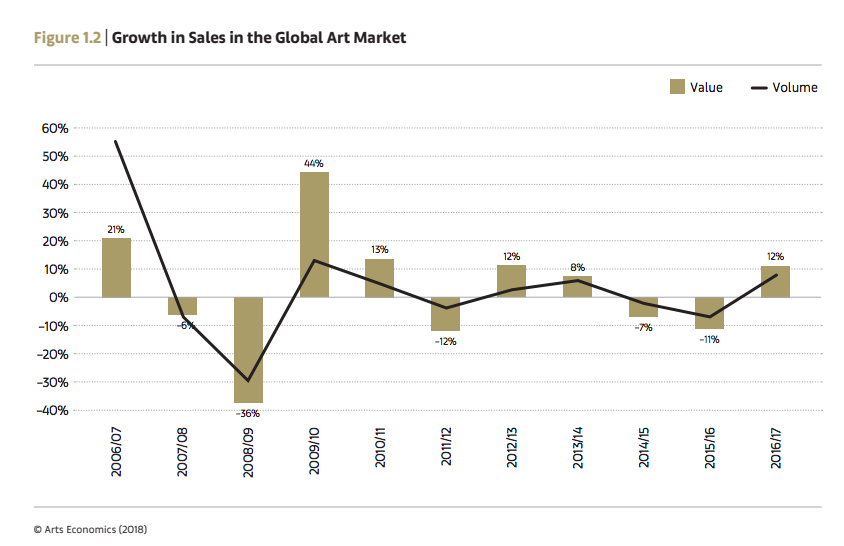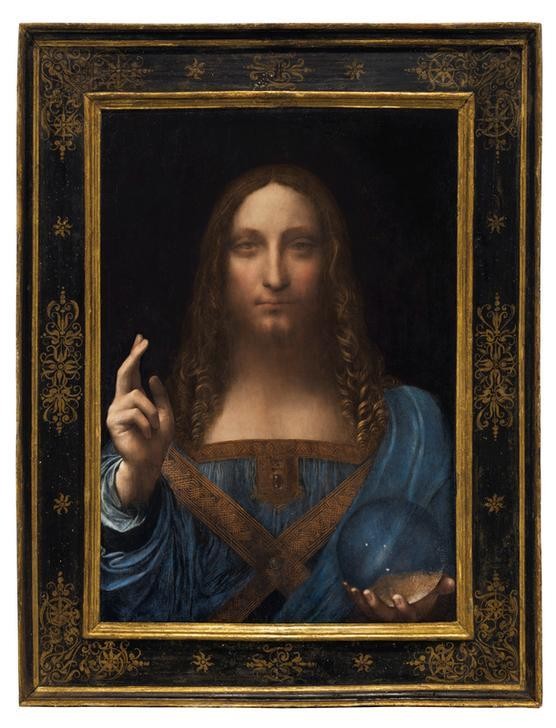Art Basel and UBS Global Art Market Report
China is Now the Second-largest Art Market in the World

Source:Reuters/Jason Lee
China overtook the United Kingdom in 2017 as the second biggest art market after the United States.
Views
China is Now the Second-largest Art Market in the World
By Alex Grayweb only
That's according to the latest Art Basel and UBS Global Art Market Report, which looks at trends in the art industry.
 Image: The Art Basel and UBS Global Art Market Report 2018
Image: The Art Basel and UBS Global Art Market Report 2018
Market Growth
The US, China and the UK are the three largest markets for art. Together they accounted for 83% of total global sales last year.
The US was by far the largest market, accounting for 42% of sales. China was in second place with 21%, and the UK in third with 20%.
It’s not the first time that China has leapfrogged the UK in the art market, but it’s only managed to beat the US once.
Billionaire Buyers
 Image: The Art Basel and UBS Global Art Market Report 2018
Image: The Art Basel and UBS Global Art Market Report 2018
The global art market increased by 12% in 2017 after two years of declining sales. In the US sales rose by 16% to $26.6 billion; in China by 14% to $13.2 billion; and in the UK by 8% to $12.9 billion.
It was also the year when the most expensive work of art ever was sold. Abu Dhabi’s department of culture and tourism bought Leonardo da Vinci’s Salvator Mundi at Christie’s for $450.3 million.
China’s growing share of the art market is being fuelled by the rise of its mega-rich. In 2016, the number of Chinese billionaires rose by nearly 25% to 637, compared with 537 US billionaires and 342 European billionaires.
While the US is home to most of the world’s top collectors (it has 42 names on the list), Asian, and especially Chinese, art collectors are becoming increasingly active. There was just one Asian billionaire on the list of top collectors in 2006, compared with 14 a decade later.
Notable purchasers have included Joseph Lau, who bought one of Andy Warhol's Mao Zedong portraits for $17.4 million in 2006, and Wang Jianlin, one of China's richest men, who paid $28.2 million for a Picasso. Former taxi driver turned billionaire Liu Yiqian famously paid $170.4 million for a Modigliani painting in 2015.
 Leonardo Da Vinci's Salvator Mundi (Image: REUTERS)
Leonardo Da Vinci's Salvator Mundi (Image: REUTERS)
Future Growth
The report predicts that US sales are likely to decrease as a result of the US tax reform, which closes a legal tax loophole. Until the end of last year, investors could sell their art tax-free as long as the proceeds were used to buy new art. This is no longer the case. Knowing this change was coming prompted a boom in activity in the art market by US collectors, and is likely to also lead to a drop in sales this year.
Meanwhile, the report says that “buoyant wealth dynamics in Asia and strong local markets” mean that Asia’s share will likely increase.
“The performance of today's growing and globalized art market is a fascinating reflection of wider economic trends and highly correlated with GDP and high net worth populations,” says the report.
The report goes on to say that 2017 was a bumper year despite continued political volatility in many regions, thanks to robust growth in global wealth, improved global economic performance, and stronger confidence in the market.
Additional Reading
♦ China's Mobile Economy, Explained
♦ Taiwan Shouldn’t Feel Inadequate Compared to China
♦ 5 Things You Need to Know About China's Booming E-commerce Market
Original content can be found at the website of World Economic Forum.
♦ China has overtaken the UK as the world's second-largest market for art
This article is reproduced under the permission of World Economic Forum (WEF) and terms of Creative Commons Attribution-NonCommercial-NoDerivs 4.0 Unported License (“CCPL”). It presents the opinion or perspective of the original author / organization, which does not represent the standpoint of CommonWealth magazine.







